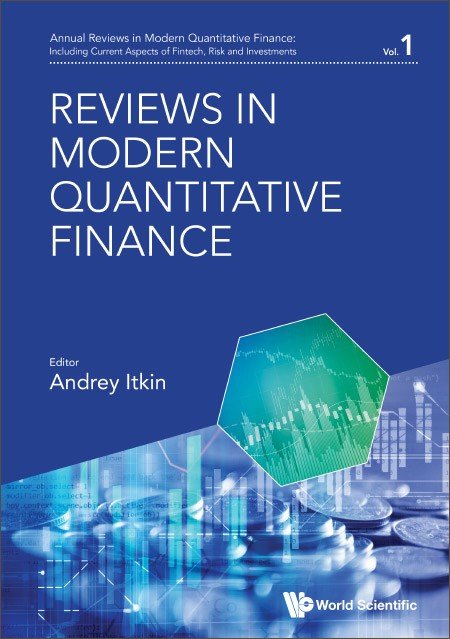| N | Authors | Title | Abstract | URL |
| 1 | A. Itkin | Pricing derivatives under Levy models. Modern finite difference and pseudo-differential operators approach.
Springer, 2017, ISBN 978-1-4939-6792-6 |
This book was devised with a purpose of presenting a new method, developed in a series of papers, and intended to propose a more efficient numerical approach to solving partial integro-differential equations. The latter appear in mathematical finance if, e.g., one takes into account jumps in the underlying spot price when pricing options written on this underlying. |  |
| 2 | A. Itkin | Fitting Local Volatility. Analytic and Numerical Approaches in Black-Scholes and Local Variance Gamma Models.
https://doi.org/10.1142/11623 |
This book was written with the purpose of presenting new results previously developed in a series of papers and explaining them consistently, starting from the general concept of Dupire, Derman and Kani and then concentrating on various extensions proposed by the author and his co-authors. This volume collects all the results in one place, and provides some typical examples of the problems that can be efficiently solved using the proposed methods. This also results in a faster calibration of the local and implied volatility surfaces as compared to standard approaches. The methods and solutions presented in this volume are new and recently published, and are accompanied by various additional comments and considerations. Since from the mathematical point of view, the level of details is closer to the applied rather than to the abstract or pure theoretical mathematics, the book could also be recommended to graduate students with majors in computational or quantitative finance, financial engineering or even applied mathematics. In particular, the author used to teach some topics of this book as a part of his special course on computational finance at the Tandon School of Engineering, New York University.
|
 |
| 3 | A. Itkin, A. Lipton D. Muravey |
Generalized integral transforms in mathematical finance.
|
This book describes several techniques, first invented in physics for solving problems of heat and mass transfer, and applies them to various problems of mathematical finance defined in domains with moving boundaries. These problems include: (a) semi-closed form pricing of options in the one-factor models with time-dependent barriers (Bachelier, Hull-White, CIR, CEV); (b) analyzing an interconnected banking system in the structural credit risk model with default contagion; (c) finding first hitting time density for a reducible diffusion process; (d) describing the exercise boundary of American options; (e) calculating default boundary for the structured default problem; (f) deriving a semi-closed form solution for optimal mean-reverting trading strategies; to mention but some. The main methods used in this book are generalized integral transforms and heat potentials. To find a semi-closed form solution, we need to solve a linear or nonlinear Volterra equation of the second kind and then represent the option price as a one-dimensional integral. Our analysis shows that these methods are computationally more efficient than the corresponding finite-difference methods for the backward or forward Kolmogorov PDEs (partial differential equations) while providing better accuracy and stability. We extend a large number of known results by either providing solutions on complementary or extended domains where the solution is not known yet or modifying these techniques and applying them to new types of equations, such as the Bessel process. The book contains several novel results broadly applicable in physics, mathematics, and engineering. |
 |
| 4 | A. Itkin (Edt)
|
Reviews in Modern Quantitative Finance.
|
This volume contains six chapters which cover several modern topics of quantitative finance and reflect the most significant trends currently shaping this field. The chapters discuss in detail and make original contributions to stochastic/fractional volatility models and their asymptotic solutions (Chapter 1); equity trading, optimal portfolios and related problems (Chapters 2, 5, 6); machine learning and NLP (Chapters 2, 3); and economic scenario generation (Chapter 4), and are written by the leading experts in the field. This book is useful for both researchers and practitioners. |
 |
